How to Prevent Separation Anxiety in Dogs: Keeping Your Pup Calm and Happy While You’re Away
Being left alone is some dogs’ worst nightmare. They have a deep desire to be with their owners all the time. Helping your dog improve their sense of security will lead to them enjoying a better quality of life – even while you’re away. Read on to learn more about how to handle separation anxiety in dogs.
DOG HEALTH
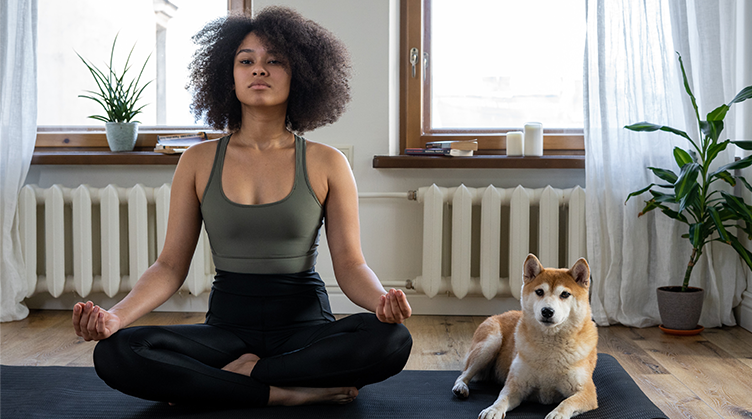
Posted by bravectosouthafrica – 14 December 2020
Separation Anxiety and Dogs
The COVID-19 pandemic has forced plenty of people to work from home, or at least spend more time at home. This isn’t necessarily such a huge punishment for the pet owners of the population, as they get to spend more time with their fur babies. Everyone fortunate enough to spend all day at home with their dog will know just what great company they are – especially when times grow stressful.
Plenty of studies have been done that focus on the benefits of being a dog owner, such as lower anxiety and blood pressure levels and higher levels of dopamine and serotonin. The last two play a significant part in a person’s calm and wellbeing, which is fantastic news. But most important of all – owning a dog helps to strengthen routines while you’re at home. This, in turn, helps you to maintain some sense of normalcy while stuck inside. In short: you can thank your dog for your sanity while you were in lockdown!
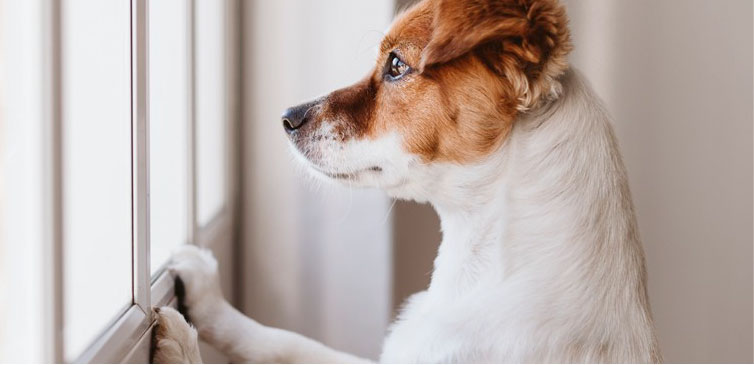
Since dogs are pack animals – i.e. they are social creatures – they are over the moon about being able to spend more time with you. Maybe you’ve been working from home for the better part of the year and you’ve found that your dog is growing more and more anxious every time you have to leave.
Remember, from your dog’s perspective this is a huge deal. As COVID-restrictions become less strict and we’re able to do more, our dogs have to readjust to being alone again for longer times of a day. In a dog’s eyes, this may be seen as a major, life-changing event. Even those dogs who’ve never shown signs of separation anxiety before could have suddenly undergone a drastic shift, displaying behavioural issues and extreme stress, which is linked to the condition.
Dealing with separation anxiety is tough. We’ve compiled some pieces of advice that should help anxious dogs to readjust to longer periods spent home alone, improve their sense of security and boost their overall quality of life.
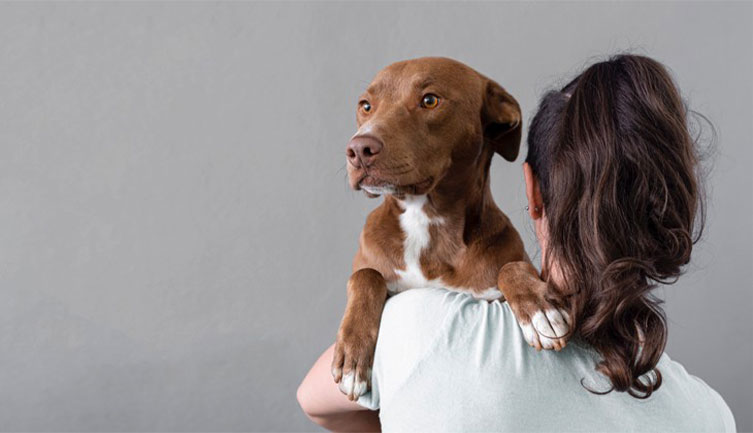
Training Anxious Dogs to Self-Soothe
You want to be able to know that your dog is comfortable with being alone. That’s why you need to help them learn crucial ‘alone time skills’ that will be helpful to them when you leave the house.
You can teach your dog some of these self-soothing skills:
- Try to make your dog have at least one nap per day while you are in another part of the house. Block them off with a baby gate, door or pen. Alternatively, have them sleep in a crate.
- Whether you’re a hard-core fan of exercise or simply like strolling around outdoors, it’s a good idea for you to go on a brief daily walk with your dog. You might also want to consider practising coming and going from your front door alone.
- If you happen to own a dog crate but your dog isn’t exactly crate trained yet, then you may want to start looking into how to teach your dog to get comfortable in and around it. You can start the process by placing some of their favourite toys and treats inside or by feeding them their meals in the crate. It should end up motivating your dog to enter and spend some time inside. You can also begin to lock the dog in the crate for short periods while you remain close by.
- If your dog has already been crate trained, you can have them take multiple rests inside their crate throughout the day. It should only be for short periods and be sure to provide your dog with a food-filled toy as occupational therapy during these times.
- Use a lightweight leash to tether your dog to a sturdy object roughly a metre or so away from you. Be sure to, once again, provide them with a food-filled toy to keep them happy and occupied. Aim to run through this exercise at least five times per day, for roughly 5-10 minutes. Start increasing the distance between you and your dog as they grow less distressed. Do this until you can be in an entirely different room in the house.
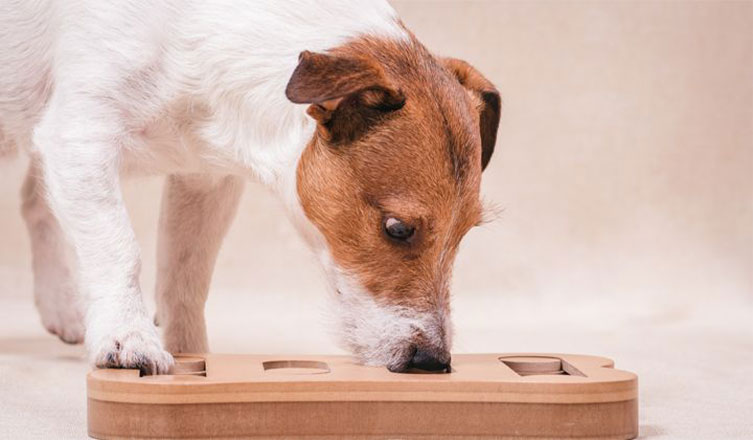
Create a Predictable Routine to Curb Dog Separation Anxiety When You Leave Home
It’s a fact that predictability generally leads to feelings of calm. This is true for both humans and dogs. A dog suffering from separation anxiety will end up benefitting from a predictable daily routine, whether you are at home with them or not. If your dog suffers from separation anxiety and needs their nerves to be soothed, then you should definitely consider creating a predictable environment for them.
It’s important that you establish a set daily routine while you might still be at home more often. This way, your dog will learn when they can come to expect attention from you throughout the day. Attention times may include feeding time, playtime, training time, exercise time and going out to potty time.
Just as your dog should come to expect attention times from you, they should also become familiar with when to expect inattention. During inattention times, your dog should be playing with their favourite toys or taking a nap. It’s important that you try to schedule these inattention periods at times when you are normally going to leave the house.
Mental and Physical Enrichment Against Dog Separation Anxiety
Any attention-time you spend with your dog – such as training, exercise, play and toilet-time – should be fully engaging. These attention sessions need to be frequent and stimulating enough for your dog to feel relaxed and want to settle down afterwards.
Consider going through a lively exercise or play session before you need to leave your dog for a while or your dog is scheduled for some alone-time. This will help to lower your dog’s energy levels, tiring them out so that they are ready to relax upon your departure. Hopefully, this should decrease the amount of time your dog spends suffering from separation anxiety.
Appoint a Designated Relaxation Space for the Dog
With time and patience, you will be able to condition your dog to play with their toys or rest in a specific area whenever you leave the house. Start by luring your dog to the designated area with treats or rewards and then gradually increase their stays within the space.
The ultimate goal here is to get the dog to go to their designated relaxation space after every daily exercise or play session, where they can then either play with their toys or take a nap. Be sure to provide your dog with rewards in this space and add additional relaxing elements, like comfortable bedding, music or even a piece of clothing that smells like you.
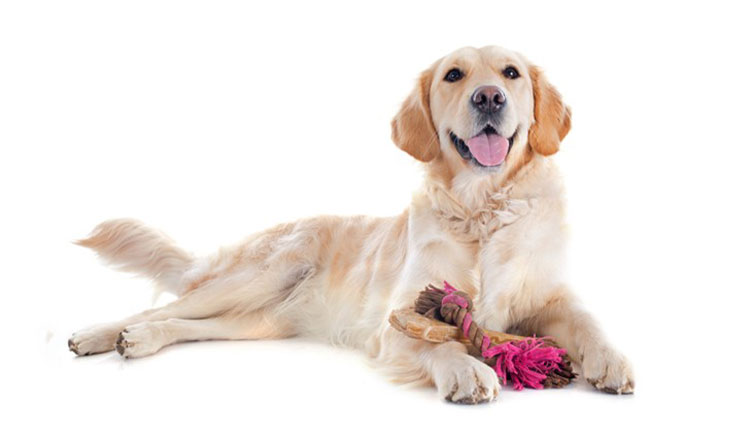
Separation Anxiety in Dogs and Counter Conditioning
The process of counterconditioning can be a rather effective solution for separation anxiety in some dogs – i.e. in those suffering from a mild case. With this training, your dog’s anxious or fearful reaction to a situation is transformed into a relaxed reaction instead. Over a certain period, your dog will come to learn that that which they fear most – you leaving them home alone – actually leads to something good. In separation anxiety cases, this usually means something tasty to eat.
For your dog to develop this association, you’ll want to give them a toy filled with food like peanut butter, low-fat cream cheese or even a frozen banana before you leave home. Your dog shouldn’t be able to devour the treat within seconds, they need to be busy with it for at least 20-30 minutes – enough time that they are completely content and satisfied. It’s important that you remember to remove these treats when you return home. Your dog should only associate these treats with your departure.
We repeat that this type of training is only effective for dogs suffering from a mild case of separation anxiety. If you have a dog suffering from a more extreme case of dog anxiety, they may not want to eat at all.
What About Extreme Cases of Separation Anxiety in Dogs?
Training becomes more complex when a dog is suffering from a more severe case of separation anxiety. You will need to train your dog to gradually become used to being home alone by going away for short periods that grow longer and longer with time.
This process is known as ‘desensitisation and counterconditioning’ and it’s best to implement it under the guidance of a seasoned professional. This is because the process can easily backfire, leaving your dog even more stressed out and scared than before.
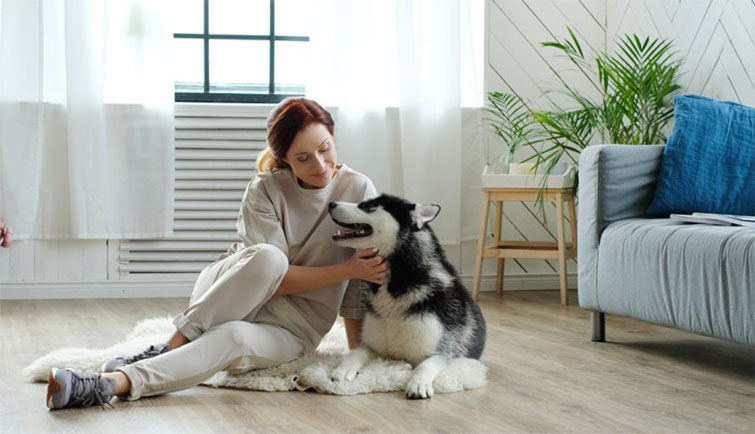
The Tell-Tale Signs of a Dog With Separation Anxiety
Are you worried that your loyal pal may be suffering from some form of dog or puppy separation anxiety? Here follow some of the tell-tale signs to look out for if your dog has separation anxiety:
- Pacing – Some dogs suffering from separation anxiety will jog or walk along a specific path. These dogs may restlessly pace back and forth or start running around in circles.
- Escaping – When you leave your dog, they might attempt to escape from their confinement area. They may try to do so through chewing or digging at doors or fences. This can end up injuring your dog’s teeth and nails.
- Chewing, digging and acting destructive – When left alone, some dogs will end up destroying household objects within their reach. They may chew up doorframes and shoes, or dig at any doors and doorways in their path. These anxious behaviours can lead to self-inflicted injuries, like cuts and scrapes to the paws, damaged nails and even broken teeth.
- Barking and howling – Once the owner of an anxious dog leaves, the dog may start to voice their unhappiness about the situation. Barking and howling as a result of separation anxiety tends to be persistent and is triggered by being left alone.
- Urination and defecation – Some dogs with separation anxiety may have accidents inside the house while left alone. If these accidents continue to happen in the presence of the owner(s), then the problem is very likely not related to separation anxiety.
It’s important to keep in mind that should these behaviours be caused by separation anxiety, they are unlikely to happen in front of you before you leave.
Don’t Get Cross With Your Anxious Dog – Provide Them With the Best Care Possible
Your dog’s anxious behaviours aren’t the result of them being disobedient or spiteful in the slightest. Should your dog display any behaviours that are associated with separation anxiety, remember that they are upset and trying to deal with stress. Don’t scold or punish the dog for these behaviours – if you do, they may end up growing more upset, worsening the problem significantly.
Your dog is your loyal and constant companion. They are always there for you when you are home so it’s time to return the favour and be supportive of them once you return to your normal routine.
For more informative and useful articles on how to care for your pets, visit the Bravecto® blog page or our affiliated MSD Animal Health website, We Are Family.
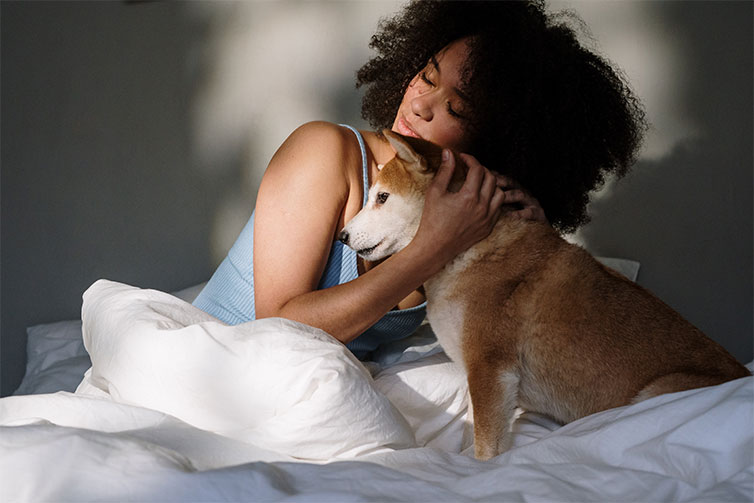
Keep Your Dog Feeling Good and Healthy as Can Be
Taking good care of your furry pal is your primary goal as a pet owner. You want your pets to remain happy and healthy throughout their life. That means taking good care of both their mental and physical wellbeing. Dealing with dog or puppy separation anxiety is one way of taking care of their mental health. An easy way for you to look after your dog’s physical health is to provide them with back to back treatments that prevent some of the most common parasitic pests like ticks, fleas and mites.
This is where Bravecto® comes to the rescue. Choose between two Bravecto® for Dogs treatments: Bravecto® Spot-On for Dogs and Bravecto® Chew. A single dose of the topical spot-on treatment will keep your dog safe from ticks for 4 months and against fleas for 6 months. Simply part the hair between your dog’s shoulder blades and apply the treatment directly to the exposed skin. Alternatively, feed your beloved pooch one tasty, chewy treat with their food and they will remain free of fleas and ticks for 12 full weeks.
Spoil your dog with the gift of parasite protection that lasts 3x longer than traditional monthly treatments. Leave your dog in good hands by making Bravecto® your preferred tick, flea and mite preventative treatment.
Subscribe to our Newsletter
Get to know your furry friend better! Sign up for all things dog- or cat-related.
The Hairy Facts about the dreaded hairball
12 April 2021
Help! My dog’s barking mad! Volume 2
12 April 2021
Your Itchy, Scratchy Cat – All About Cat Skin Problems
12 April 2021
The Dog’s Diet: A Bone of contention?
01 April 2021
Mango Fly Worms: How to Spot and Eliminate them
Posted on November 28,2019
Managing Mange And Mites In Your Dog
Posted on June 11,2018
Why Do Cats Purr and How? Learn What Your Cat Is Saying
Posted on October 14,2020
How to Get Rid of Ear Mites in Dogs
Posted on November 06,2019









